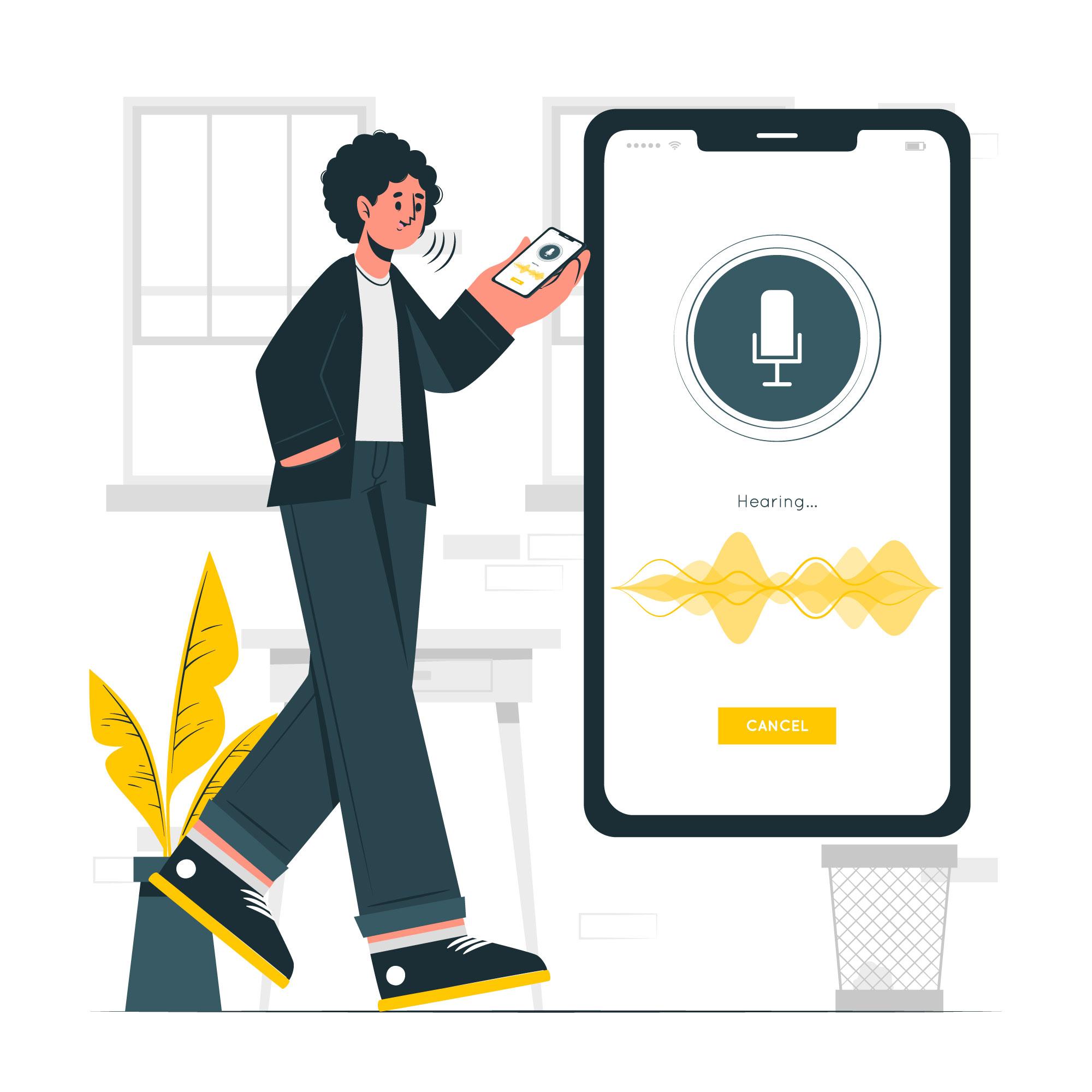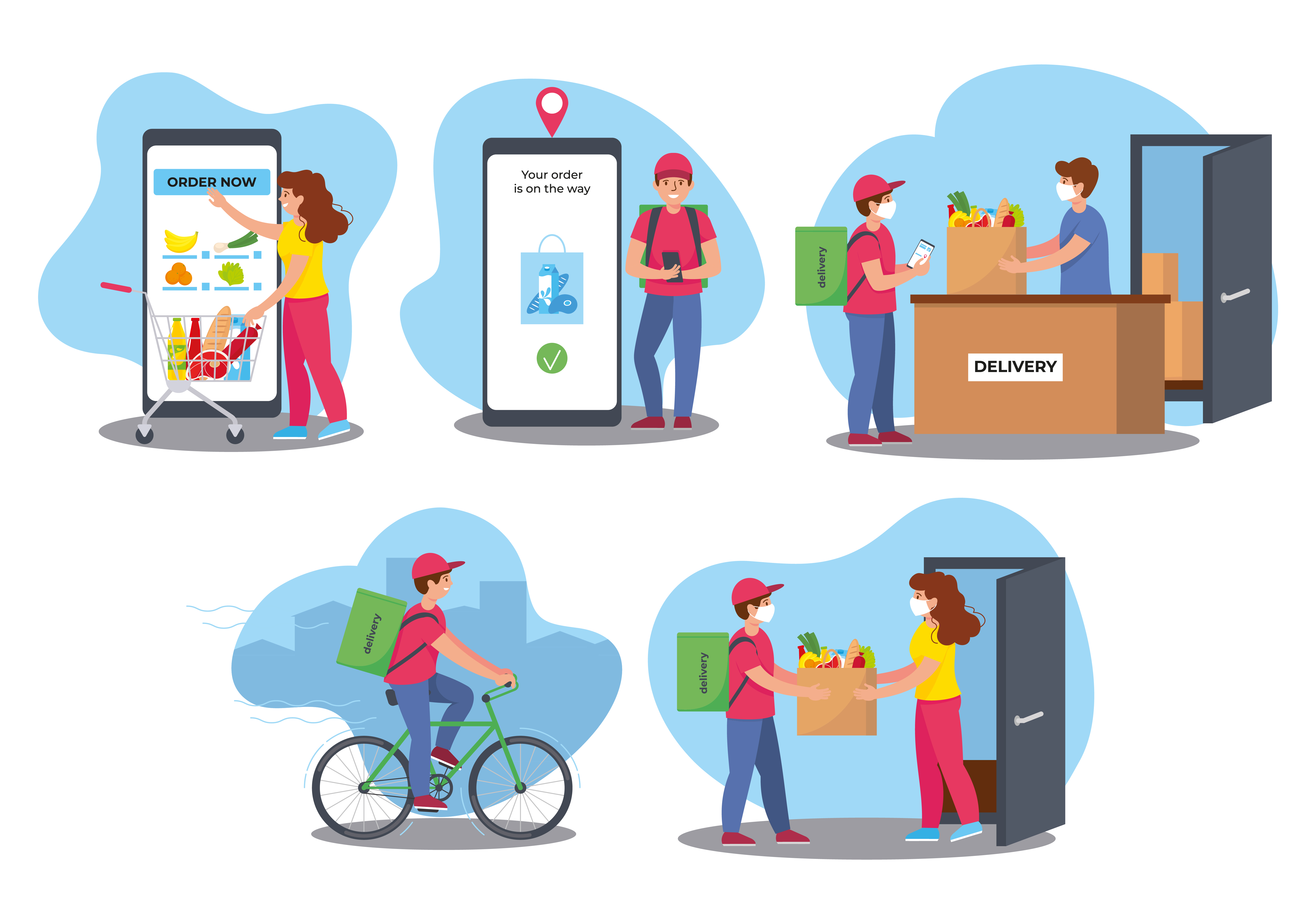7 proven tips and techniques to improve your online surveys in 2023
Market research is one activity every business should indulge itself in. It’s the perfect way to carry out customer satisfaction research, receive product feedback, and generate data from a customer insight survey. But what if you’ve already invested in market research programs and are still unable to understand the market’s pulse or your users’ opinions?
If your respondents earn money through surveys in India or elsewhere, that makes it even more important that you hit bull’s-eye with your market research. Otherwise, you will lose your finances and audience.
Here are 7 practiced and proven ways to play your best card in market research and learn your audience’s mindsets. Thus, you can improve your hit rates and response percentage for your online surveys in 2023.
7 Proven Ways to Improve Your Online Surveys In 2023
- Go Diverse
Market research doesn’t mean seeking opinions from a thousand people about your products. Or reaching out to a niche audience with a long survey. This is how the survey is done completely wrong.
A survey needs to collect diverse feedback from people of all demographics. If your form has only 2 options in the gender field, the form is conservative in its approach. You need to support gender-fluid people as well. For some reason, if you don’t seek opinions from a prospective audience outside your country, you should. And there is no reason you shouldn’t support the BLM supporters and phenomenon.
Without diversity and inclusivity in your surveys, you’re neglecting a big crowd to seek their thoughts. Support this aspect in market research shows you care about people irrespective of their ethnicity, economic background, culture, inclination, and mental health status. Thus, you establish trust with your users that you value anonymous voices and varied opinions.
There is no place for people in the current times who castigate repressed and marginalized communities, and rightly so. Many brands these days release their products only when they’ve accessibility features for visually and audibly impaired communities. Thus, they widen the horizon of their segmentation and ultimately increase their brand value. With inclusive features and policies, you also increase your market size.
Also, seeking opinions from everyone who could be your target audience gets you a holistic review. Imagine you run a magazine on sports and target male audience as your only readers. But there are high chances of females and LGBTQIA+ fans reading your prints because sports don’t differentiate between people. And likings don’t choose genders. You’ll miss some good ideas if you survey only the mass readers.
There is no second opinion on the fact that being inclusive also generates better customer engagement.
Read how you can make your market research efforts diverse and inclusive.
- Identify or Revise Your NPS
NPS or Net Promoter Score decides how many people in the market like your brand and are willing to recommend it to their friends and family. This is one of the most important surveys you should conduct. The frequency of this survey should be based on your brand’s products and services.
You don’t need to create long surveys with 20 questions and extremely thoughtful answers to conduct an NPS. Instead, you just need to ask one question: “How likely are you to recommend <insert your company name> to your family and friends on a scale of 0 to 10?”
Based on the answers, you can evaluate where you stand in the market. And this paves the way for you to decide how to improve your upcoming business plans. Most likely, one question that isn’t hard for anyone to answer who has opted for your product or services in the past, unlike a long survey.
This survey is relevant at all times because this isn’t based on the sales of your recently launched or the most hit product. Or even your 5-star-grade services. NPS determines how your existing customers feel about your brand in general, whether they’ve used five products or fifty or even just one annual services from your team.
NPS determines the loyalty of your users and sets a benchmark to move ahead and tweak your marketing and business strategies. Also, despite being miffed by a recent product, a user might score you well because they like your brand’s mission and vision, your company’s overall performance, and how your customer service treated their queries in the past.
The best time to query your audience is not really any defined timeline by the books. It depends on your offerings. You might like to review your NPS quarterly if you deal in a retail business or FMCG products. If you’re a bank or a financial institute, an annual review is good to assess your standing.
When you evaluate your NPS, compare yourself with your last score and compete with yourself. Learn more about how to calculate NPS.
- Mobile-Optimized Surveys
According to Statista, 60% of the audience uses mobile-based surveys. With mobiles performing most functions of laptops and handheld devices globally—and even controlling your daily chores in the house, thanks to IoT—due to their adaptability, size, and ease of handling, we might see this number grow fast. So, why use paper-based surveys when your audience is digital?
A paperless survey is inexpensive. It slims your budget on paper, printing, reprinting in case of mistakes, and distributing and collecting the survey forms. This long process needs a lot of manual hardship and human power. If the plan is not solid, you might need to repeat the whole process, causing a dent in your bank account.
With digital, mobile surveys are easily distributed and are fast to access information and evaluate results. It’s nearly impractical and an infinite loop to gather stats from the papers your users fill. The manual answer could be illegible and can skew your data. At least those mistakes don’t crop up in digital forms. Many BI programs can produce insights within a few hours with mobile-based surveys.
Not everyone can afford a laptop, but mobiles are indispensable these days. Nearly everyone carries a device with them. So, accessibility to your surveys increases a great deal with mobile-optimized surveys. And they’re easy to use and circulate because anyone can use them any time of the day: during lunch hours, traveling, while exercising, or listening to an audiobook.
Needless to say, they’re environmental friendly, and if you’re a supporter of values dealing with climate change, this style suits you perfectly.
Here is a crisp post to learn how to create mobile-optimized surveys.

- Perfect Your Designs
Whether you run a survey every week based on users’ purchase history or once a quarter based on your business, your surveys need to be designed with some thought. A poorly designed survey can mar your intentions and lead to a poor response or, worse, skewed data with abandonment.
Knowing what your users like in the survey forms and what generally grips attention is the key to a good design rather than amazing graphics and attractive fonts. You aren’t launching a designer clothing line but something that collects feedback. So, alongside eye-pleasing features, the form should be easy to fill out and submit, easy on the eyes while reading, and focused on keeping the attention intact.
Focus on your topic in the survey, and don’t stray away. You might offer multiple electronic gadgets like smartwatches, android phones, laptops, and tablets and their accessories. But if you’re assessing your tablets, don’t ask questions about mobiles. Related accessories like chargers, cases, etc., might seem fit in the survey if they have a logical section of their own.
Keep your surveys goal-oriented. If you intend to evaluate the pricing of your product, don’t pose questions about performance. A survey form with mixed questions might confuse the respondents. This might end with unanswered questions.
Inform your users about the validity and survey duration. Your survey might take 20 minutes, but it might be open for feedback for the whole month. Both these data, if known, help a user time their responses. Else they might miss the window for sensitive surveys.
Write questions that’re unbiased. For this, avoid leading and loaded questions that influence a respondent’s opinion. Never have double-barreled questions. Use simple vocabulary and avoid absolute choices.
The digital world is full of spammers. And mobiles are easy targets for hacking than laptops. So, to gain the trust of your users, you should customize your forms with your branding. Reflect the color scheme, fonts, and themes from your website. Add your logo. Also, imbibe the values in surveys that your brand support publicly. For instance, go-green initiatives, CSR plans, and inclusivity.
To learn more about the good designing of survey forms, follow this post.
- Avoid These Grave Mistakes at All Instances
Creating an online form for your market research surveys is not only an art but also a science. This means a lot goes into the process. You need proper fonts and the right questions. A good app and email circulation strategy. Using good and fitting technologies during and after, for instance, database access and security, to collate data after the survey and KPIs.
There is a lot of room here to miss things—minor and major. One small mistake might ruin your user experience and lead your market research into a ditch in no time.
First of all, never rely on just the basic demographics. We’ve already stressed inclusivity. But you should also avoid including the wrong demographics irrelevant to your survey. Sending a form to the wrong sampling population can lead to abandonment or, worse, skewed data. If you employ a third party for surveys, ensure they understand your target market well.
Another mistake is writing the wrong questions. Double-barreled, loaded, or leading questions are a strict no-no. Such questions confuse or influence users and divert them from choosing the right options. The right way to make surveys shine is to ask clear and only goal-oriented questions.
If you only believe in opting for quantitative feedback, then how are you planning to improve the quality of your product? So, include a few open-ended questions. Give your users a chance to voice out thoughts that aren’t covered in your surveys. Something like “Do you have anything to add about our product?” with a text box might help you assess your offering better.
Long surveys might be unavoidable at times. For instance, a consumer insights survey is usually long. But we’ve a solution for that, too, so your users don’t yawn and start skipping questions. Divide your surveys into logical sections. For instance, with a 20-question form, divide it into 4-5 sections, with each packet having the same topic. 5 questions on demographics, 5 on user experience, 5 on suggestions and improvement goals… so on.
Read the 7 mistakes that can spoil an online survey experience and outcome for market research consultants.
- Elevate Your Low Response Rate
Despite trying every measure we’ve suggested in this post already, what if your response rate is low? Here are some tips to push this KPI higher in 2023.
Responding to surveys isn’t a day-long task. Most participants fill out surveys during their travel, lunch break, or when they retire for the day from their jobs and chores. And mobile is the most used device during these hours because carrying a laptop all the time isn’t feasible.
So, deploy an app for surveys if you can. Many people don’t even check their personal emails daily, much less every few hours, like they do with work emails. But mobile notifications are hard to ignore, with a pop-up and a banner highlighting the app icon. Such reminders allow your brand to stay in your users’ minds.
Send text messages as reminders if you can; you need permission for that. Also, use social media to invite new and existing users for surveys. Social channels are a great way to keep your audience’s memory afresh.
On that note, declare your survey outcomes on social media, too, for transparency. Users love brands who care about such gestures.
There’s no better reward than a financial one for the respondents and participants. Most brands are open to incentivizing their audience in lieu of the valuable time they invest in surveys. Especially the frequent and seasoned respondents prefer to earn money through surveys in India, the US, Canada, or any other country.
Whether you pay in cash via a payment gateway like PayPal or in vouchers is totally your call. Surprise rewards also excite users, like sending a coupon code for their next eBay shopping when they finish 20 successful surveys will make you a likely brand choice. Referral bonuses and loyalty programs work well, too.
Of all tips, here is one of the most important ones. Make your users feel at home and cared for. Personalize your invitations for attending a survey, and so do the forms. If possible, add first names. Thank them for their time and keep them updated about the outcome.
Explaining your privacy policy in context with users’ demographics and the purpose of your survey matters. Update your policy page on your website whenever you revise them. Assure your users of zero data breaches and win their confidence.
Learn some more tips and tricks to elevate a low response with surveys.

- Try Convenience Sampling if You’re a First-Timer
When you survey a group of people randomly only based on their willingness, you’re doing convenience sampling. This method isn’t accurate.
Nor is it going to help you gain success on a wider level. But convenience sampling is probably the simplest method to follow when you’re just starting out. And since we aren’t hell-bent on helping only big brands who can afford dedicated teams and finances, we ought to include this method for the small teams and companies starting up with a promising product.
In the convenience sampling method, your audience doesn’t represent a large population. They don’t fall into some defined segments and demographics. This can skew your outcome, but this process does have a place in market research methodologies if done thoughtfully.
To make this method work, you should find your audience in the right place. For instance, to analyze the scope and market viability of an online educational program, rather than going to a mall to survey random people, you should go to where your users are. Sampling random people outside a college or school would be heavily beneficial.
You should use convenience sampling when you’re pressed for time, money, resources, and expertise. Suppose you’re struggling with funding as a new and small company and yet want to research your prospective users. Convenience sampling would help you set some markers for you. You can pick your business plan from there and start building your product.
Read more about this method here.
Bonus: Aim for Excellent Survey Data Quality
While it may sound like an obvious expert tip that your data quality should be top-notch, isn’t that a result of a good response rate rather than a driving factor? We say it is both a product and a catalyst. Because better data quality comes from a good process of data collection that starts with a good research partner.
Look for experience, expertise, and excellence in the research team. Don’t hire a panel company just because they have industry experience. Go for an in-depth evaluation yourself. Look for their customer segmentation and how deep and wide they go.
No one else understands your users as much as you do. So, evaluate the profiles of your respondents yourself that your partner company provides. Then, segment them properly based on your needs and not trends or standard practices.
Vet the profiles as critically as possible, not just age, gender, location, and interest. Understand the psychography as much as the demography. When you do this process precisely, you’ll realize you have reduced the influence of fake profiles and bots that ruin the data integrity and true voices in customer satisfaction research surveys.
So, if your respondents earn money through surveys in India or elsewhere, it becomes more crucial to aim for high survey quality results to avoid all the fake profiles that only target the money involved.
If you’ve been stuck with your market research, you must look for a partner who brings in data quality and authentic profiles through their panel.
How Opinionest Can Help Improve Success Rate for Online Surveys
Opinionest, a panel company of Track Opinion, has been working in various industries for years. We handle projects that scale from small to large and cater to mid-size organizations to start-ups. We’ve also worked extensively with big-ticket clients who have a brand name in their domains.
Whether you’re looking for a focused group survey or an online survey, we help you gather data that has minimal deviation and maximum usability. Reach out to our team of experts here and start a discussion to make your market research program in 2023 a success.




You may also like

The Future of Voice Surveys: Will We Be Talking to Our Devices to Complete Surveys?

How Your Opinions Shape A Brand’s Services and Its Performance in the Market

The Role of The Respondent Community in Your Survey Journey

Survey Incentives Vs. Intrusive Ads: How to Tell the Difference

Copyright © 2025-2026 Track Opinion. all rights reserved.



